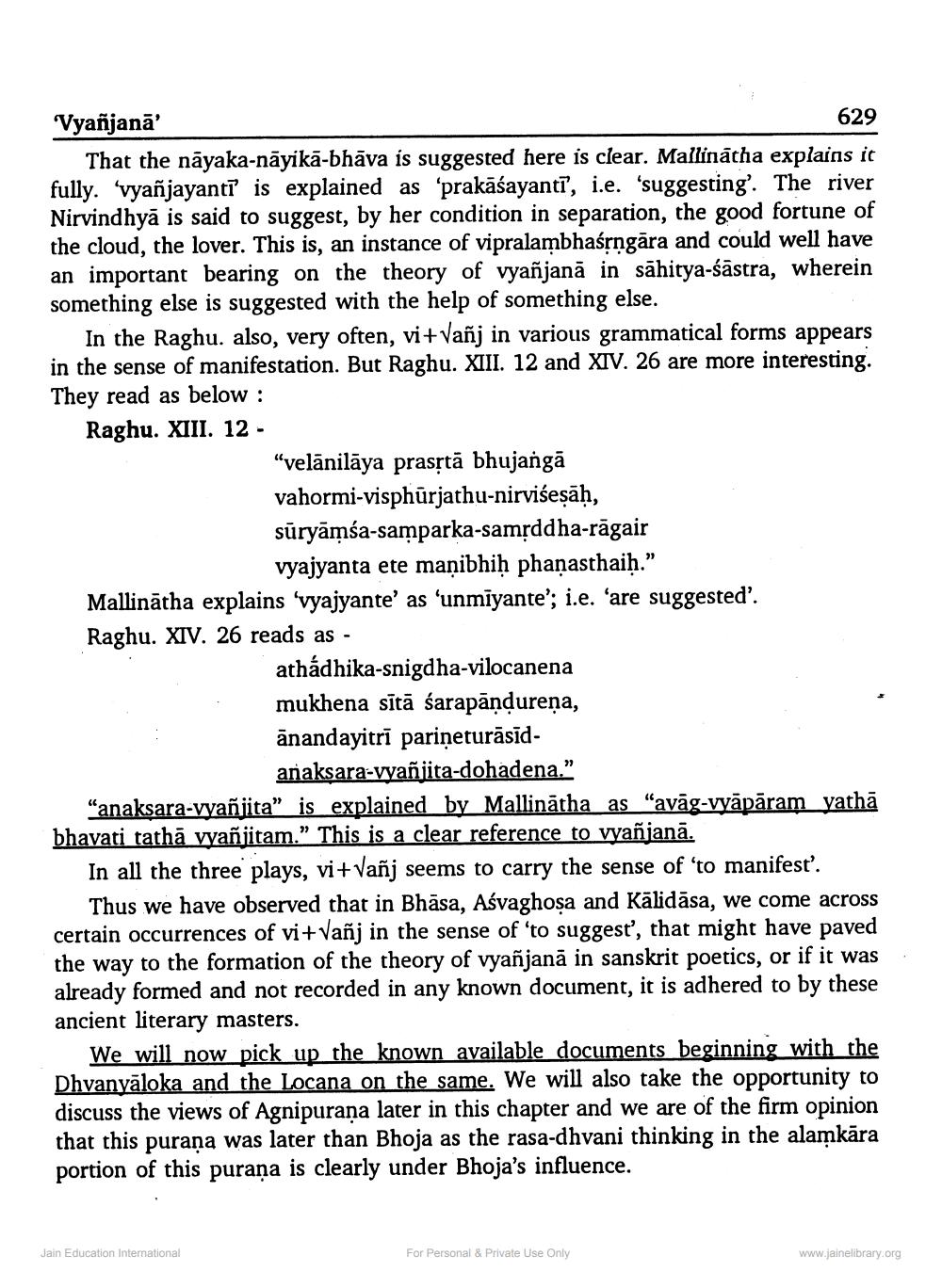________________
Vyañjanā
629 That the nāyaka-nāvikā-bhāva is suggested here is clear. Mallinátha exp fully. vyañjayantī is explained as 'prakāśayantī, i.e. 'suggesting'. The river Nirvindhyā is said to suggest, by her condition in separation, the good fortune of the cloud, the lover. This is, an instance of vipralambhaśrngāra and could well have an important bearing on the theory of vyañjanā in sāhitya-śāstra, wherein something else is suggested with the help of something else.
In the Raghu. also, very often, vi+Vañj in various grammatical forms appears in the sense of manifestation. But Raghu. XIII. 12 and XIV. 26 are more interesting. They read as below : Raghu. XIII. 12 -
"velānilāya prasștā bhujangā vahormi-visphūrjathu-nirviśesāḥ, sūryāmśa-samparka-samțddha-rāgair
vyajyanta ete manibhiḥ phanasthaih.” Mallinātha explains 'vyajyante' as 'unmīyante'; i.e. ‘are suggested'. Raghu. XIV. 26 reads as -
athádhika-snigdha-vilocanena mukhena sītā śarapāndureņa, ānandayitrī parimeturāsīd
anaksara-vyañjita-dohadena." "anaksara-vyañjita” is explained by Mallinātha as "avāg-vyāpāram yathā bhavati tathā vyañjitam.” This is a clear reference to vyañjanā.
In all the three plays, vi+Vañj seems to carry the sense of 'to manifest'.
Thus we have observed that in Bhāsa, Ašvaghosa and Kalidāsa, we come across certain occurrences of vi+ Vañj in the sense of 'to suggest', that might have paved the way to the formation of the theory of vyañjanā in sanskrit poetics, or if it was already formed and not recorded in any known document, it is adhered to by these ancient literary masters.
We will now pick up the known available documents beginning with the Dhyanyāloka and the Locana on the same. We will also take the opportunity to discuss the views of Agnipurana later in this chapter and we are of the firm opinion that this purana was later than Bhoja as the rasa-dhvani thinking in the alamkāra portion of this purana is clearly under Bhoja's influence.
Jain Education International
For Personal & Private Use Only
www.jainelibrary.org




